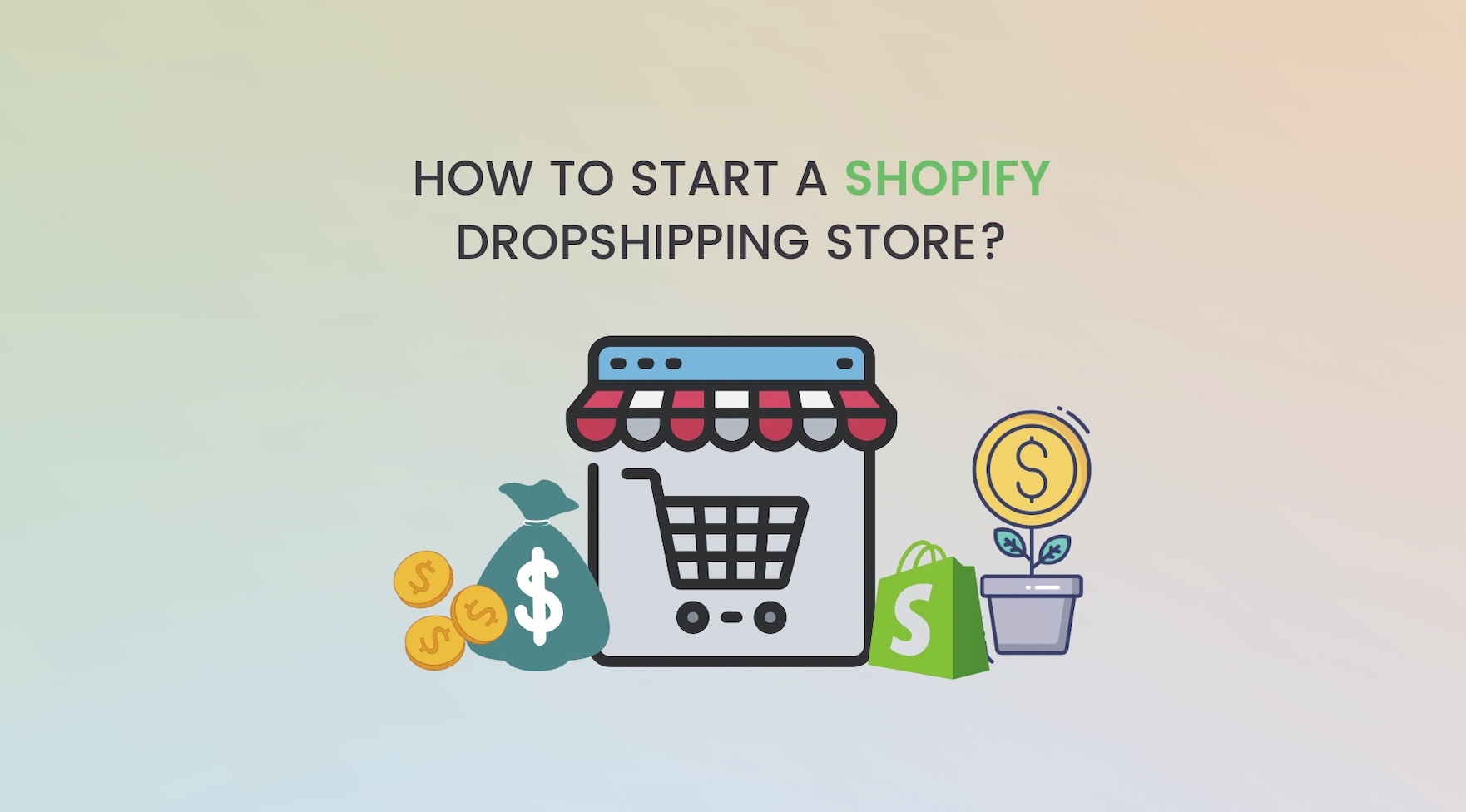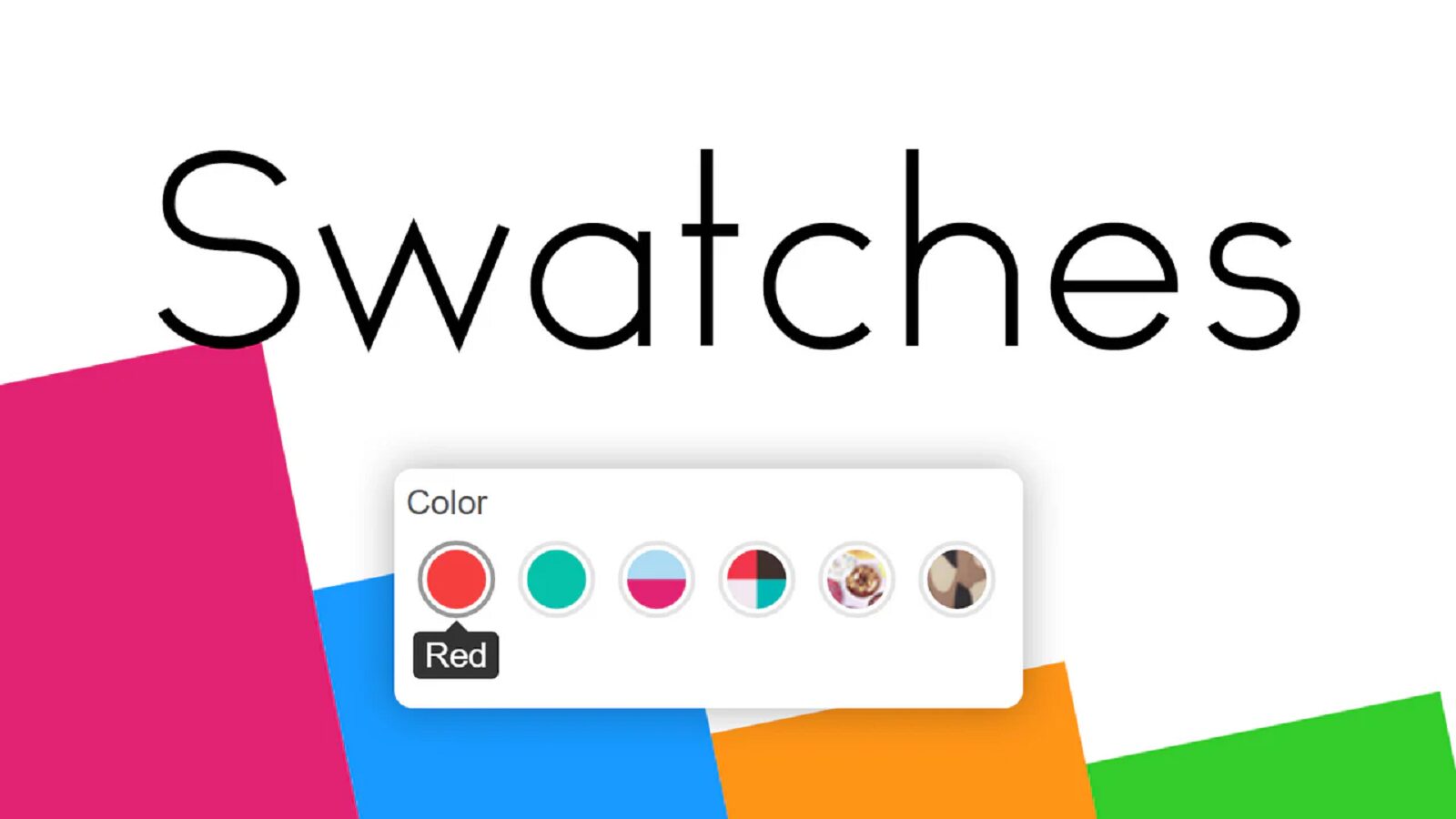Thinking of starting your own online business? Dropshipping on Shopify provides an easy way to sell products and be your boss. With just a few simple steps, you can launch a store and begin profiting right away.
So how to start a Shopify dropshipping store? This guide will walk you through the process of setting up a successful Shopify dropshipping store. We’ll cover choosing a niche, finding suppliers, designing your site, driving traffic, and more. Best of all, you can get started with low upfront costs using Shopify’s platform.
Follow these six easy steps and you’ll be on your way to find out how to start a Shopify dropshipping store. Learn how to take control of your future through the profitable world of eCommerce dropshipping.
Contents
- 1 Why Consider Dropshipping on Shopify?
- 2 How to Start a Shopify Dropshipping Store In 6 Steps
- 3 Tips for Starting a Shopify Dropshipping Store
- 4 FAQs about How to Start a Shopify Dropshipping Store
- 5 Ready to Start a Shopify Dropshipping Store
Why Consider Dropshipping on Shopify?
There are several reasons why many entrepreneurs consider dropshipping on Shopify:
- Wide range of integrations: There are numerous apps and integration solutions available at Shopify to add more options to your store. It is easy to incorporate dropshipping applications and tools to facilitate product sourcing, manage stock, and ship orders.
- Low startup costs: This is because, in dropshipping, there is no need for upfront investments in inventory. You only pay for the sold products; therefore, it is much cheaper to start your e-commerce business than many times.
- Ease of setup: One of the most prominent e-commerce platforms, Shopify offers simple design and powerful tools for creating a virtual shop front. Dropshipping on Shopify is easy without having a lot of technical knowledge firsthand.
- Test products quickly: With dropshipping, you can quickly list new products to see customer demand and interest. This allows easy testing of products and categories.
- Operate from anywhere: Once set up, your store can be managed remotely. This gives an entrepreneur the flexibility to work from home or anywhere.
- Lower risk of overstock: Since you don’t hold inventory, there’s no risk of getting stuck with unsold products. Items only ship after customer orders.
✅ To get more information:
- Is Dropshipping Worth It? How to be Successful with Dropshipping?
- How to Start Dropshipping for Free: The Complete Guides
How to Start a Shopify Dropshipping Store In 6 Steps
Step 1: Choose a Product Line
The very first step to starting a Shopify dropshipping store is deciding on a dropshipping product line to sell. This will be the core focus of your store and what customers are coming to you for. When choosing a product line, look for things that have proven demand and are easy to source from dropshipping suppliers. Some good options to consider include:
- Health and Beauty Products – Items like skincare, vitamins, and supplements are always in demand. Make sure to pick niche products within this industry.
- Consumer Electronics – Selling phone cases, chargers, earbuds, etc through dropshipping is popular. However, this space is competitive so focus on unique designs.
- Home and Kitchen Goods – People always need household items. Consider trendy gadgets, organizers, and kitchen accessories sourced from China.
- Apparel – T-shirts, accessories, and kids’ clothing sell well but you’ll need consistent new designs. Private label is best.
Do market research to validate there’s interest in your product idea. Choose something you’re passionate about so you can grow your expertise. Set up your store focused around 1-3 product lines for a clear niche. You can expand your offer later as your business scales.
⚡ Related topics:
- Top-rated digital products to sell on Etsy
- Top 20+ trending selling products on Etsy
- Best products to sell on Shopify
Step 2: Find Suppliers
Once you’ve picked your product line, it’s time to find quality dropshipping suppliers to source inventory. The best place to do this is on specialized marketplaces called DSers (dropshipping directories).

Some top DSers to check include:
- Oberlo – One of the largest with thousands of verified suppliers across all product categories. Easy filtering and contracting.
- DSM central – Long-standing marketplace focused on US and EU suppliers. Great for electronics, toys, and health products.
- SaleHoo – Another large marketplace known for vetting suppliers. Particularly good for private labeling and custom products.
When browsing DSers, filter suppliers based on your product category, minimum order quantities, and shipping times. Carefully compare each on:
- Product selection – Do they offer the styles and varieties you want?
- Shipping costs and speed – Transparency on transit times from overseas factories.
- MOQ – Suppliers with lower minimums allow testing products with less risk.
- Reviews – Check previous buyers’ experiences online or via the Dsers.
Select 2-3 top suppliers for each product line and test orders to ensure quality control before fully listing their items. DSers make finding global suppliers straightforward.
🎁 For anyone who wants to start with jewelry dropshipping business, check out the Top 10+ Reliable Jewelry Dropshipping Suppliers to Consider for Business.
Step 3: Set Up Your Shopify Store
Choose a Shopify Plan

Begin by selecting a Shopify plan. Consider your budget, goals and future growth when choosing between Basic, Shopify and Advanced plans. The Basic plan is suitable when starting.
Choose a Store Theme
Next, pick a Shopify theme that matches your brand identity. Browse through themes in Shopify’s catalog and select one with a design aesthetic, colors and fonts that align with your brand. Then you can customize the theme more by editing layouts, images and other styling elements.
🎁 Discover now: Best Shopify Themes to Get Started 2024
Add Store Information
Set up important store information like your Shopify store name, address and “About Us” page content. This builds credibility with customers by providing context about who you are.
Create Product Listings
Create product listings by importing images, descriptions and pricing obtained from suppliers. Make sure to list products under relevant categories on your store. Add the supplier’s price as the “Compare At” price to highlight discounts.
Configure Payments
Configure payment options by connecting with processors like Stripe and PayPal. Also, set up tax and shipping rules according to your business location and the territories you ship to. Install apps like Oberlo and ShipStation to automate order fulfillment from suppliers to customers.
Comparisons of:
Once the store is populated with products and integrated with all necessary functionality, set up a custom domain name pointing to your Shopify store URL. Finally, have others test the store for any issues prior to launch. Ongoing optimization will help enhance the customer experience over time.
✅ Learn more: Top 10 Best Shopify Dropshipping Apps
Step 4: Import Products
You have found reliable suppliers above, now you need to import products from DSers to your Shopify store, follow the guide below:
- Log into your DSers account and export the product data to an Excel or CSV file. This should include images, titles, descriptions, pricing, etc.
- Download and install the Oberlo import app on your Shopify admin. Oberlo is a handy tool that streamlines importing products from DSers.
- Start an import in Oberlo and map the fields from your product file to the corresponding Oberlo fields. This could include Title, Images, Brand, Variants, etc.
Oberlo will automatically import the products to your Shopify store with all relevant data filled in the product templates. Review each imported product for accuracy. Make any needed edits directly from Shopify.
- Arrange products in logical categories and sub-categories for improved browsing.
- Consider creating collection pages to showcase related product groups.
- Publish all products so they are visible to customers on the live storefront.
You can now continue adding more products from DSers regularly to expand your catalog over time.
Step 5: Marketing Your Store
At this degree, your number one goal is to grow brand attention and attract ability clients to your website. Here are a few impactful advertising and marketing techniques that can help you gain this intention:
Social Media Marketing: Utilize popular social media systems like Facebook, Instagram, and Pinterest to create devoted debts on your logo. Regularly put up approximately your products, and percentage special offers, and engage with your followers. Social media is an effective tool to expand your attain and appeal to greater capability customers.
>>> 5 Key Pillars of Shopify Social Media Marketing to Boost Your Brand

Use Facebook/Google advertisements: Consider the usage of paid social media advertisements or Google ads to goal particular demographics and places. With cautious optimization, you may maximize your go-back on investment (ROI) over the years. Start by experimenting with various ad creations and target audiences through the usage of smaller budgets.
Affiliate Marketing: Collaborate with influencers and bloggers for your industry to sell your products and provide them with a commission for every sale. This permits you to faucet into their present audience and reach a much wider market.
Email Marketing: Send ordinary emails to your subscribers with new offers, reductions, and other promotions to hold your emblem pinnacle of mind and pressure income.
Blog Content: Create engaging and informative blog content associated with your niche or products. This now not most effective improves your search engine ranking, however additionally provides cost to capability customers and establishes your logo as an authority within the enterprise.
Retarget Online Buyers: Don’t allow potential consumers to slip away – retarget them the usage of pixels to your internet site to tune their surfing behavior and ship applicable commercials to remind them of your store. This enables you to boost conversion charges and keep your brand in front of interested audiences.
Consistency is prime – make sure your brand is always seen and tasty together with your audience to foster logo loyalty. Be patient because it takes time to gain insight, and consciousness on growing your following.
Step 6: Tracking Analytics and Growth
It is important to adjust your results. This can help you optimize your strategies by analyzing facts as well as metrics and knowing what works for you.
Google Analytics: To measure vital metrics such as traffic sources, top pages, conversion rates, and others, install the Google Analytics tracking code to the website. This will offer an idea of visitor engagement.

E-commerce analytics: The Shopify platform has built-in analytics that track sales, products viewed vs. purchased, average order value over time, and so forth.
Campaign tracking: For paid ads, closely monitor cost per click/acquisition up to desired actions like purchases. Review objectives over time to increase ROI.
Social media insights: Facebook for instance provides an in-depth analysis of fan count, posts reached, and engagement rates among other things which helps in refining social strategies.
Conversion rate optimization: Analyze what leads to drop-offs and why people fail to complete purchases. Increase sales by solving problems such as complex checkouts.
To evaluate marketing and operational successes or areas needing improvements review metrics either weekly or monthly. Create targets for this kind of metric such as increasing average order value or conversion rate by a certain percentage each time period.
Tips for Starting a Shopify Dropshipping Store
Here are 7 tips for setting up a Shopify dropshipping store to follow:
1. Choose an appropriate niche: Choose unique products or niches to attention to rather than looking to promote the entirety. This allows you to target your advertising and build recognition. Popular niches include domestic furnishings, accessories, sporting items, health, and splendor.
2. Find the best providers: Investigate reliable dropshipping providers that provide fast transport instances for your customers. Make certain they have a good selection and low-order portions, and deliver immediately for your clients. Try out the exclusive offers before committing.
3. Create a body of workers’ reserve: Create a stunning and properly designed Shopify subject matter that looks professional and is set up. Include first-rate pics of merchandise, write compelling descriptions, and present factors and life proof.
4. Optimize your keep for an alternate: Simplify the shopping and checkout procedures with a clear call to action. Experiment with unique web page layouts and flags to see what offers the best conversions.
5. Create an advertising and marketing campaign: Launch Facebook and Google commercials to force-centered traffic on your site. Start with small finances and enhance the satisfaction of the campaigns through the years. You also can use influencer advertising for promotions.
6. Provide notable customer service: Offer fast transport instances, cope with any problems right away, and welcome responses to build agreement. Keep clients happy so they may come back for more.
7. Examine store reviews: Constantly track metrics like sales, add cart fees, and common order fees via Shopify reports. Use insights to refine marketing and enhance patron enjoyment.
Please be patient. It can take time to build an audience and see regular income. Stick to optimizations and awareness on lengthy-time periods increase in preference to in a single day success.
FAQs about How to Start a Shopify Dropshipping Store
1. What products are best to sell via dropshipping?
Popular niches include accessories, home goods, health & beauty, toys, and hobbies. Choose products with high search volumes that are affordable and have quick shipping from suppliers.
2. How long does it take to set up a Shopify dropshipping store?
A basic store can be set up within a day. More complex themes and customization may take 1-2 weeks. Make sure to add 10-20 products minimum to start seeing sales.
3. How can I drive traffic to my new store?
Run Facebook and Google ads targeted at your niche. Collaborate with influencers, and bloggers for reviews. SEO can also help over time. Be consistent with content/social media marketing.
4. Do I need to hold any inventory as a dropshipper?
No, with dropshipping your suppliers directly fulfill and ship orders to customers. You can sell products without investing in inventory upfront.
5. What are some tips for good customer service?
Ship fast, communicate proactively, follow up on reviews, and address issues promptly and professionally to build trust and loyalty.
6. How long does it take to see a profit?
Most stores don’t see real profit for 3-6 months as it takes time to build an audience and optimize. Stick with testing and learning instead of expecting overnight success. Consistency and improvements lead to long-term growth.
Ready to Start a Shopify Dropshipping Store
While it may take some trial and error in the beginning, staying consistent with these fundamentals will help set your new store up for success. Remember to be patient as you test different ideas and build an audience over time. BSS Commerce Shopify hopes these steps give you a solid starting point about how to start a Shopify dropshipping store. Wish you the best of luck in your new dropshipping venture!
Ready to take your online store to the next level? BSS Commerce’s Shopify Migration Services provide a secure and efficient path to Shopify. This powerful platform offers a wealth of features to streamline your operations, boost sales, and fuel your business growth.




